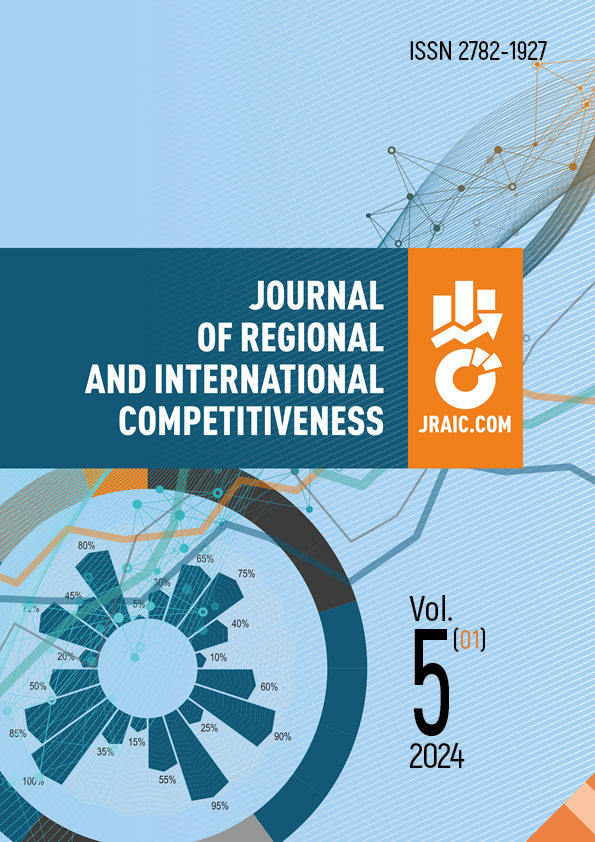Baku, Azerbaijan
One of the main banking activities is the branch network. It provides the effective banking, the profitability. Choosing the right location of branches is very important for the bank effective operation. Random or intuitively locations can have a negative impact on key performance indicators in the future. The correct and thoughtful choice of the bank branch location ultimately determines its maximum efficiency. The paper concerns with the determining of the bank branch location in terms of thorough mathematical calculation and many factors influencing bank activity. We developed a special calculation method using the DEA (Data Envelope Analysis) methodology, considering financial, branch location, location features, etc. The paper dwells on the issue of one large branch effectiveness comparing to several smaller branches covering a wider consumer area on the example of the branch on A. Sharifzade street, Baku, Azerbaijan. Indeed, it is important to consider the location in terms of its geolocation and landscape. However, one of the main issues is expediency of establishing one large or several small branches in densely populated areas. Moreover, it is necessary to take into account the infrastructure to improve the bank performance. To consider this issue, we use both hypothetical and statistical data of Capital Bank. It is one of the largest banks in Azerbaijan. Also it has a large network of branches. The article examines expediency of establishing one large or several small branches in the area close to the existing branch of Capital Bank on A. Sharifzade street. The efficiency of the current operating branch was compared with the total efficiency of virtual branches in several combinations. We analysed the indicators of the Inshaatchylar branch and virtual branches in different combinations in different locations in accordance with DEA CRS (Constant Return to Scale) method. Additionally, we determined the effectiveness of both the Inshaatchylar branch and virtual branches in various combinations. Thus, the highest score is the most effective one.
effective operation of the bank branches; profit and loss forecast; bank expenses; general branch efficiency; Data Envelope Analysis
1. Bussofiane, A., Dyson, R. J., & Thanasoulis, E. (2012). Applied Data Convolution Analysis. Rossijskij zhurnal menedzhmenta, 10(2), 63–88 (in Russian).
2. Safari, M., Mansoor, S., & Homayounfar, M. (2018). The Application of Super Efficiency Techniques in Measuring the Efficiency of Bank Branches (Case study: Melli Bank of Guilan Province). Iranian Journal of Optimization, 10(2), 125-137.
3. Amit Srivastava, M. (2017). Measuring Efficiency of Commercial Banks in India - A DEA Study. British Journal of Economics, Finance and Management Sciences 82, 13(2), 82–92.
4. Esmailian, G., Reza Jafari, M., Jafari Eskandari, M., & Tavakkoli-Moghaddam, R. (2020). Measuring the Efficiency of Banks' Performance Based on Economic Policies Using Data Envelopment Analysis. Int. J. Nonlinear Anal. Appl., 11(2), 39–61.
5. Cotrim, H., Sobreiro, V., Kimura, H., & Barberio, M. (2018). Efficiency in the Brazilian banking system using data envelopment analysis. Future Business Journal, (4), 157–178.
6. Yang, C., & Liu, H.-M. (2012). Managerial efficiency in Taiwan bank branches: A network DEA. Economic Modelling, (29), 450–461.
7. Eken, M.H., & Kale, S. (2011). Measuring bank branch performance using Data Envelopment Analysis (DEA): The case of Turkish bank branches. African Journal of Business Management, 5(3), 889–901.
8. Aryanezhada, M. B., Najafib, E., & Farkoush, S. B. (2011). A BSC-DEA approach to measure the relative efficiency of service industry: A case study of banking sector, International. Journal of Industrial Engineering Computations, (2), 273–282.
9. Coelli, T., Prasada Rao, D. S., & Battese, G. E. (2005). An Introduction to Efficiency and Productivity Analysis. N.Y.: Springer.
10. Cooper, W. W., Seiford L. M., & Tone K. (2007). Data Envelopment Analysis: A Comprehensive Text with Models, Applications, References and DEA-Solver Software. N.Y.: Springer.
11. Emrouznejad, A. (1995–2011). Data Envelopment Analysis Homepage. Retrieved from http://www.DEAzone.com
12. Fare, R., Grosskopf, S., & Lovell, K. C. A. (1994). Production Frontiers. Cambridge: Cambridge University Press.
13. Forsund, F. R., & Sarafoglou, N. (2002). On the origins of Data Envelopment Analysis. Journal of Productivity Analysis, 17(1/2), 23–40.
14. Verweire, K., & van den Berghe, L. (2005). Integrated Performance Management: A Guide to Strategy Implementation. Sage Publications: London, Thousand Oaks, New Dehli.



















